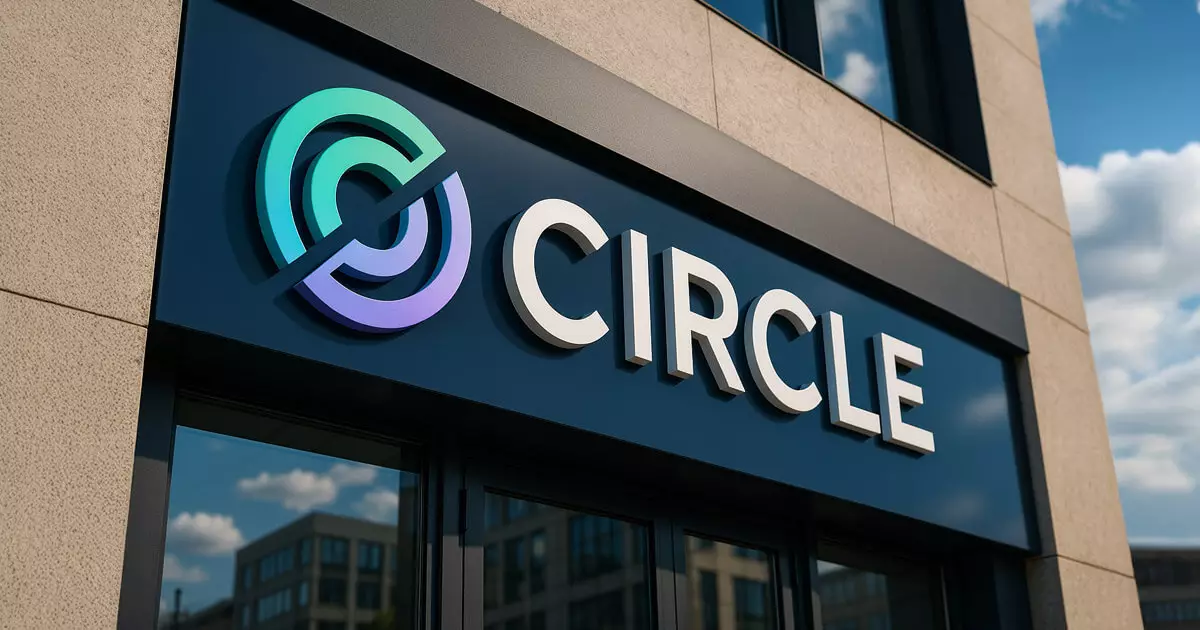The financial world is on edge as Circle, the firm behind the USDC stablecoin, appears to be on the brink of a watershed moment. Rumors swirl around the prospect of Circle going public through an initial public offering (IPO) targeted at a valuation of $5 billion. However, fresh conversations hint at a potential acquisition, with industry giants Coinbase and Ripple emerging as contenders. Indeed, Circle is straddling a line between a transformative public debut and becoming a cog in a larger machine. This juxtaposition raises questions about the future trajectory of the stablecoin sector and the overall health of the cryptocurrency market.
The Intricacies of Integration with Coinbase
Circle’s historical ties to Coinbase cannot be overstated. Initially founded in a cooperative environment under Centre Consortium, Circle and Coinbase worked together for mutual benefit, sharing governance over the valuable USDC currency. Post-2023 restructuring now sees Circle in a commanding position concerning USDC’s governance, yet it remains tethered to Coinbase through a stringent revenue-sharing agreement. This partnership paints a portrait of interdependence, with Circle granted limited freedom to forge new partnerships without Coinbase’s approval. It results in an odd dynamic: while Circle has more control technically, Coinbase benefits tremendously from Circle’s stablecoin activity, especially given its soaring revenues from USDC transactions.
The integration goes much deeper than mere financial benefits. Insiders suggest that if Coinbase were to pursue an acquisition of Circle, the latter would likely leap at the opportunity. The dynamics at play suggest a mutualistic relationship, one where the success of USDC is crucial for Coinbase’s own operational health. This raises a probing question: will Circle’s drive for independence harm its relationship with Coinbase or push both entities into a fruitful synergy underneath the umbrella of consolidation?
Ripple’s Ambitions and Missed Opportunities
On another front, Ripple’s overtures toward acquiring Circle have introduced another layer of complexity. While Ripple’s show of interest with a $4 to $5 billion price tag was met with rejection, primarily as Circle deemed it insufficient, it highlights the competitive landscape. Ripple’s approach came in the form of a mix of cash and XRP, adding an additional layer of interest. Ripple holds a significant stash of XRP, and its active acquisition strategy could make it a formidable adversary in the digital asset space.
Despite Ripple’s competitive edge in acquisitions, its proposed offer for Circle may have deviated too much from market expectations, ultimately missing the mark. Ripple’s valuation was perceived by insiders as inadequate, underscoring the complexities of valuing digital asset companies in a fluctuating market. Both Ripple and Circle carry the weight of unique brand identities and narratives, and synergy in such a merger would require nuanced understanding and alignment of visions.
Financial Strengths and Strategic Paths
In an era when liquidity is king, Coinbase undoubtedly holds the financial wherewithal to make a play for Circle. With a reported cash reserve of $8 billion, Coinbase finds itself in a markedly robust position compared to Ripple’s offer. The sheer scale of potential capital acquisition positions Coinbase as the more viable suitor to accomplish this proposed takeover of Circle. Its already healthy acquisition history signals a strategic pivot towards growth through consolidation, while financial reports hint at strong earnings driven by USDC-related activities.
This raises the stakes for Circle. While a public listing may provide freedom and visibility, merging with Coinbase could streamline its operational processes and fuel further growth through deeper integration into the crypto ecosystem. For Circle, the ideology of being an independent player stands in stark contrast to the realities of maintaining relevance and profitability in a competitive environment.
As the digital currency landscape continues to evolve, Circle stands at a pivotal crossroads. Whether it opts for an IPO that heralds a new era of independence or a deeper merger fold with Coinbase that symbolizes collaboration amidst competition remains to be seen. The decisions made in the upcoming months could potentially reshape the marketplace and redefine how stablecoins operate within the broader financial arena. With a balance of risks and opportunities, Circle’s path could define not just its future but also the trajectory of the crypto space itself.

